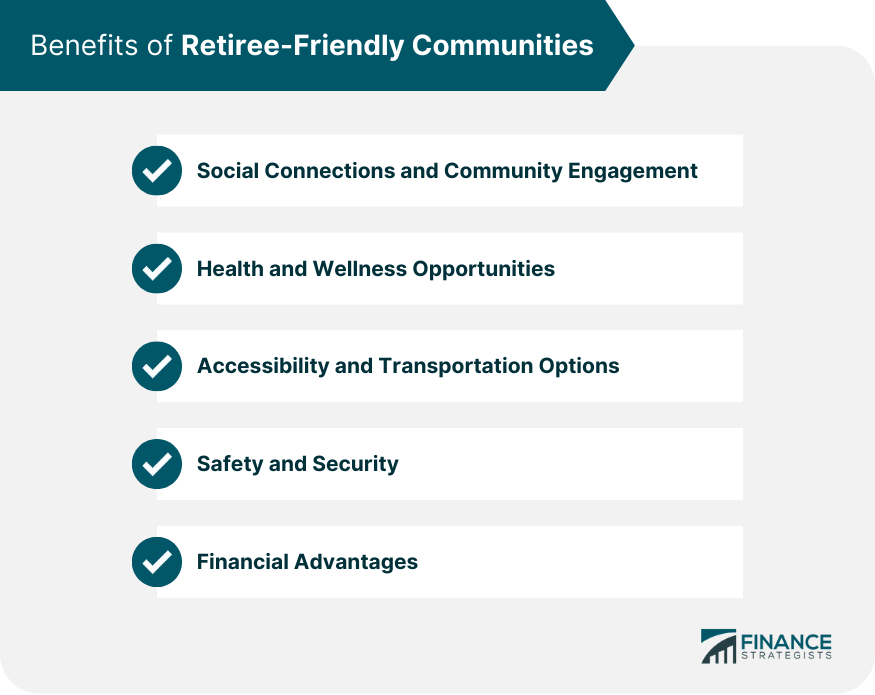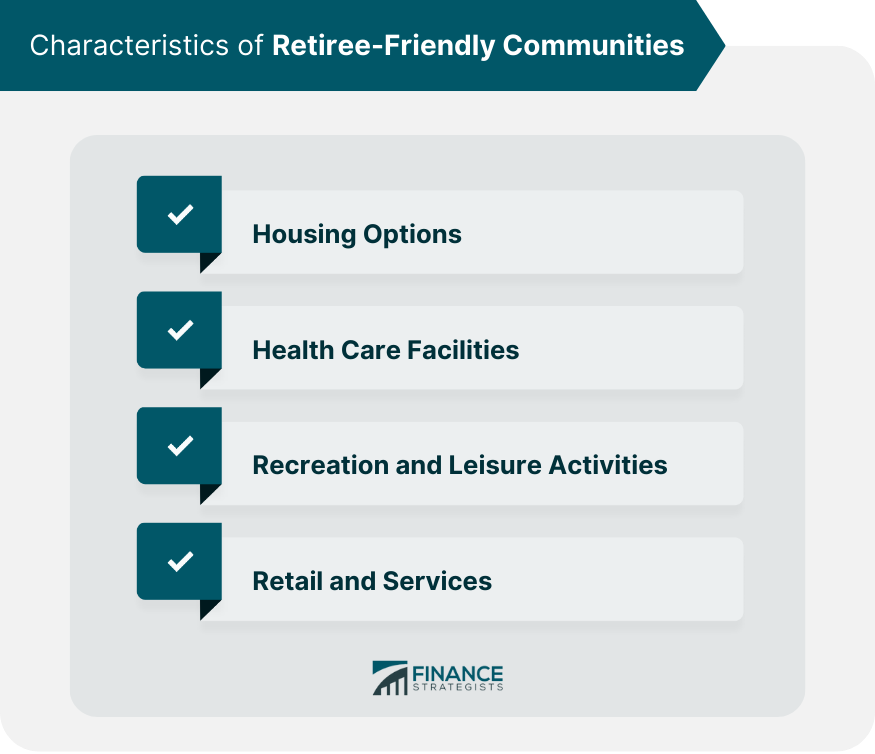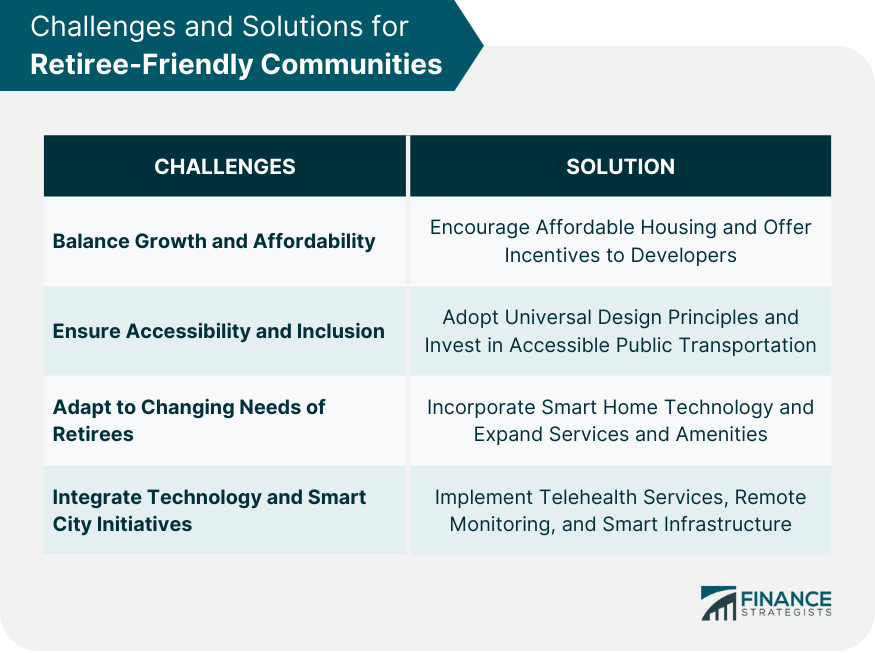Retiree-friendly communities are designed to cater to the needs of an aging population, providing a safe, comfortable, and engaging environment for seniors to enjoy their golden years. As the number of retirees continues to grow, the demand for retiree-friendly communities has increased significantly. One of the primary benefits of retiree-friendly communities is the opportunity for social connections and community engagement. These communities are designed to encourage interaction among residents, helping seniors forge new friendships and participate in various activities. Retiree-friendly communities often provide a range of health and wellness opportunities, such as fitness centers, swimming pools, and walking trails. They may also offer classes and workshops focused on improving the overall well-being of residents. These communities prioritize accessibility and transportation options for seniors, including well-maintained sidewalks, accessible public transportation, and transportation services specifically for older adults. A strong emphasis is placed on ensuring the safety and security of residents in retiree-friendly communities. This may include features such as gated entrances, security patrols, and emergency call systems. Retiree-friendly communities can offer financial advantages, such as lower property taxes, senior discounts, and affordable housing options. Affordable housing is a key component of retiree-friendly communities, ensuring that seniors can find suitable accommodations within their budget. These communities cater specifically to the needs of seniors, offering a range of services and amenities designed to support independent living, assisted living, or skilled nursing care. Age-restricted neighborhoods limit residency to adults above a certain age, typically 55 or older, providing an environment tailored to the needs and preferences of older adults. Retiree-friendly communities prioritize accessible home designs, featuring features such as single-story layouts, wider doorways, and grab bars in bathrooms. Having medical centers nearby is crucial for retiree-friendly communities, ensuring that residents have access to high-quality healthcare when needed. These communities should offer specialized care options, such as geriatric medicine, rehabilitation services, and memory care. In-home care services allow seniors to receive the support they need while remaining in the comfort of their own homes. Community centers serve as hubs for social and recreational activities, offering classes, workshops, and events tailored to seniors. Retiree-friendly communities often feature parks and outdoor spaces where seniors can enjoy fresh air, exercise, and socialize with neighbors. A variety of classes and workshops may be offered, covering topics such as art, cooking, gardening, and technology. Cultural attractions, such as museums, theaters, and galleries, provide opportunities for seniors to engage in enriching experiences and lifelong learning. Having grocery stores within close proximity is essential for retiree-friendly communities, making shopping for essentials more convenient for seniors. Pharmacies play a critical role in retiree-friendly communities, ensuring that seniors have easy access to their medications and health-related products. A variety of dining options can enhance the overall quality of life for seniors in retiree-friendly communities. Having easy access to banking and financial services allows seniors to manage their finances conveniently and securely within their community. With a warm climate, beautiful beaches, and numerous cultural and recreational opportunities, Sarasota is a popular retirement destination. The city offers a wide range of housing options, from affordable condos to luxurious waterfront estates. Additionally, the area has a thriving arts and culture scene, including the renowned Ringling Museum of Art. Known for its sunny weather, scenic desert landscapes, and world-class golf courses, Scottsdale is an attractive option for retirees seeking an active lifestyle. The city offers a diverse range of housing options, including apartments, condos, and single-family homes, as well as numerous senior living communities. Additionally, the area has a thriving arts and culture scene, including the Scottsdale Museum of Contemporary Art. With its vibrant arts and culture scene, stunning natural scenery, and thriving food and beverage industry, Asheville has become a popular retirement destination. The city offers a wide range of housing options, from historic homes to modern condos, as well as numerous senior living communities. Additionally, the area has a strong sense of community, with numerous volunteer opportunities and a supportive network of local organizations. As the demand for retiree-friendly communities grows, it is essential to balance the need for growth with the preservation of affordability. Solutions may include implementing policies to encourage the development of affordable housing and offering financial incentives to developers. Retiree-friendly communities must prioritize accessibility and inclusion, ensuring that all residents can fully participate in community life. This may involve adopting universal design principles, investing in accessible public transportation, and providing resources and support for seniors with varying levels of ability. As the needs and preferences of retirees evolve, retiree-friendly communities must adapt accordingly. This may involve incorporating smart home technology, offering flexible housing options, and expanding the range of services and amenities available. The integration of technology and smart city initiatives can enhance the quality of life for seniors in retiree-friendly communities. Examples include telehealth services, remote monitoring systems, and smart infrastructure that promotes energy efficiency and sustainability. Retiree-friendly communities play a vital role in addressing the needs and preferences of an aging population. These communities offer numerous benefits, including social connections, health and wellness opportunities, accessibility, safety, and financial advantages. Key characteristics of retiree-friendly communities encompass a range of housing options, proximity to healthcare facilities, diverse recreational and leisure activities, and access to essential retail and services. While there are challenges to creating and maintaining these communities, such as balancing growth and affordability, ensuring accessibility, and adapting to the changing needs of retirees, innovative solutions and the integration of technology can help address these issues. As the demand for retiree-friendly communities continues to grow, it is essential to prioritize the planning and development of these environments to improve the quality of life for seniors and support the well-being of an increasingly aging population.Retiree-Friendly Communities Overview
Benefits of Retiree-Friendly Communities

Social Connections and Community Engagement
Health and Wellness Opportunities
Accessibility and Transportation Options
Safety and Security
Financial Advantages
Characteristics of Retiree-Friendly Communities

Housing Options
Affordable Housing
Senior Living Communities
Age-Restricted Neighborhoods
Accessible Home Designs
Health Care Facilities
Proximity to Medical Centers
Availability of Specialized Care
In-Home Care Services
Recreation and Leisure Activities
Community Centers
Parks and Outdoor Spaces
Classes and Workshops
Cultural Attractions
Retail and Services
Grocery Stores
Pharmacies
Restaurants
Banking and Financial Services
Top Retiree-Friendly Communities
Sarasota, Florida
Scottsdale, Arizona
Asheville, North Carolina
Challenges and Solutions for Retiree-Friendly Communities

Balancing Growth and Affordability
Ensuring Accessibility and Inclusion for All Residents
Adapting to Changing Needs of Retirees
Integrating Technology and Smart City Initiatives
Final Thoughts
Retiree-Friendly Communities FAQs
Retiree-friendly communities offer numerous benefits for seniors, including social connections and community engagement, health and wellness opportunities, accessibility and transportation options, safety and security, and financial advantages.
Retiree-friendly communities cater to the healthcare needs of their residents by ensuring proximity to medical centers, providing access to specialized care, and offering in-home care services to support seniors in maintaining their health and well-being.
Popular locations for retiree-friendly communities in the United States include Florida, Arizona, and North Carolina, which offer appealing climates, a lower cost of living, and a variety of recreational and cultural activities for seniors.
Challenges faced by retiree-friendly communities include balancing growth and affordability, ensuring accessibility and inclusion for all residents, adapting to the changing needs of retirees, and integrating technology and smart city initiatives. Addressing these challenges involves implementing policies that promote affordable housing, investing in accessible infrastructure, and embracing technological advancements to improve the quality of life for seniors.
The future of retiree-friendly communities is being shaped by technology and new trends in senior living, including the integration of smart home technology, telehealth services, and remote monitoring systems, as well as a focus on wellness, active aging, and the development of multi-generational communities. These advancements and trends will continue to influence the evolution of retiree-friendly communities to better serve the needs of seniors.
True Tamplin is a published author, public speaker, CEO of UpDigital, and founder of Finance Strategists.
True is a Certified Educator in Personal Finance (CEPF®), author of The Handy Financial Ratios Guide, a member of the Society for Advancing Business Editing and Writing, contributes to his financial education site, Finance Strategists, and has spoken to various financial communities such as the CFA Institute, as well as university students like his Alma mater, Biola University, where he received a bachelor of science in business and data analytics.
To learn more about True, visit his personal website or view his author profiles on Amazon, Nasdaq and Forbes.











